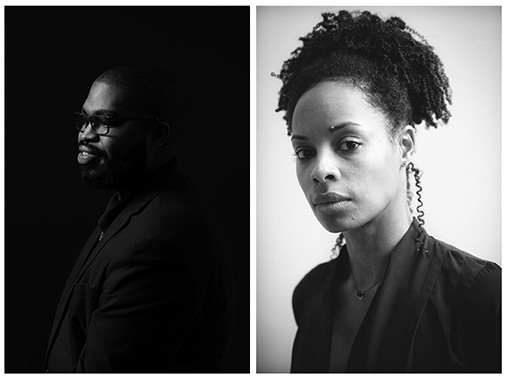For our Stanzas web feature, we ask writers to introduce us to their favorite poets by way of a handful of poetic lines. This week, Tyree Daye, whose poems “Miss Mary Mack Introduces Her Wings” and “Miss Mary Mack Considers God” appear in our Fall 2019 issue, examines the final lines of a poem by Nicole Sealey.

Photos by Beowulf Sheehan (Daye) and Rachel Eliza Griffiths (Sealey)
As a poet obsessed with death—the death of my ancestors and my own—I’m continually coming back to Nicole Sealey’s “The First Person Who Will Live to Be One Hundred and Fifty Years Old Has Already Been Born” for how the poem conjures questions about how we measure a human life and the human experience. Particularly, I enjoy how each line explores the space between “ourselves and oblivion,” which is how I think of our connections to the natural world. Oblivion is the natural world, and poets must give over our bodies to oblivion or death.
Of late my mother has begun to think life
short-lived. I’m too young to convince her
otherwise. The one and only occasion
I was in the same room as the Mona Lisa,
it was encased in glass behind what I imagine
were velvet ropes. There’s far less between
ourselves and oblivion—skin that often defeats
its very purpose. Or maybe its purpose
isn’t protection at all, but rather to provide
a place, similar to a doctor’s waiting room,
in which to sit until our names are called.
Hold your questions until the end.
Mother, measure my wide-open arms—
we still have this much time to kill.
There is so much space between ourselves and fully recognizing our lives, and so little space between “ourselves and oblivion.” The poem makes myths and new meanings from our everyday sayings and uses our bodies as tools to measure our lives in infinity. Elegantly, Sealey uses the Mona Lisa, a 516-year-old painting, not only to measure this space but to use da Vinci’s painting to explore mortality, an artist speaking from the dead. Sealey is dealing with the same issues as Mary Ruefle does in her “28 Short Lectures” in which she discusses how no living poet can teach us about poetry because they are alive (I also believe this about all art). But when that poet dies, they can teach us everything about poetry because they now are a “whole person.” In a poem that is hinging on our obsession with death, the Mona Lisa or the making of any art is to live beyond bones.
